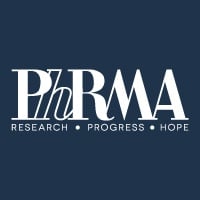New research released this week highlights the barriers that patients face in accessing medication-assisted treatment (MAT) for opioid use disorder (OUD) and the personal, health and societal benefits of improving access to this form of treatment.
MAT is an evidence-based approach that pairs behavioral therapy with medications that block the effects that opioids produce and / or mitigate the symptoms of opioid withdrawal. Data continues to show that expanding treatment to MAT for those suffering from opioid addiction can generate significant health, economic and social benefits.
A new report from IHS Markit, which was done with support from PhRMA, shows that doubling MAT adoption rates in the commercially insured population over the next 15 years could prevent up to 6.1 million overdoses and save as many as 805,000 lives. According to the report, this expansion could also save the health care system as much as $645 billion through avoided overdoses and associated medical expenses.
![PhRMA_MAT_TW_v3[1][1][1]](/-/media/Project/PhRMA/PhRMA-Org/HubspotImages/hubfs/464546/PhRMA_MAT_TW_v3-1--1--1.jpg)
Another new PhRMA report shows that, despite the broad evidence supporting the use of MAT for OUD, there are widespread and systemic barriers to accessing this treatment. Among patients with the disorder, fewer than 20 percent report receiving treatment for it. And in 85 percent of counties, there is not a single opioid treatment program where patients can access methadone and 43 percent of counties still do not have a clinician capable of prescribing buprenorphine.
Other barriers outlined in the report include the broad use of a range of utilization management tools by insurers, such as requiring prior authorization and/or step therapy, which can create hurdles for patients when they try to access treatment. The analysis also shows that coverage rates for brand MATs is lagging, and when these treatments are covered, they are primarily placed on higher cost-sharing tiers, suggesting patients could experience problems affording the treatment.
PhRMA applauds passage of the 2018 Substance Use-Disorder Prevention that Promotes Opioid Recovery and Treatment (SUPPORT) for Patients and Communications Act. In passing this landmark legislation, Congress recognized that ensuring appropriate treatment for opioid use disorder will reduce the number of opioid overdoses and help support those in need of treatment.
Even a modest improvement in patient access to MAT can achieve dramatic improvement in health outcomes while providing significant savings to the health care system. We look forward to working with all stakeholders to combat the opioid crisis, including finding innovative ways to expand access to these critical treatments.
Read the PhRMA report here. The IHS Markit report is here.



![PhRMA_MAT_TW_v3[1][1][1]](/-/media/Project/PhRMA/PhRMA-Org/HubspotImages/hubfs/464546/PhRMA_MAT_TW_v3-1--1--1.jpg)


